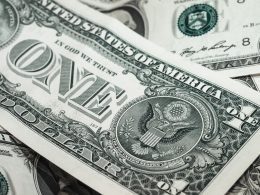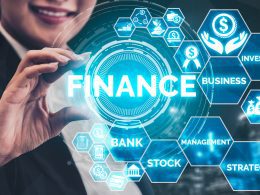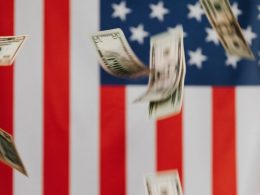As we navigate through uncertain economic times, the Federal Reserve’s commitment to keep inflation in check has been put under scrutiny. With its recent decision to let inflation run above 2%, some economists are questioning whether this approach is sustainable and if it will lead to unintended consequences. As a result, investors and consumers alike are left wondering how they can protect themselves from potential higher prices. In this blog post, we’ll explore the Fed’s inflation goal, why some disagree with their approach, and what steps you can take to prepare for potentially higher inflation. So grab a cup of coffee and let’s dive in!
The Fed’s Inflation Goal
The Federal Reserve’s inflation goal is to keep prices of goods and services stable, with a target of 2% annual inflation. They believe that this level of inflation is healthy for the economy as it encourages spending, investment and job growth. However, in recent years they have struggled to meet their target.
To combat this, the Fed has taken an accommodative approach by keeping interest rates low and buying government bonds. This policy has helped boost economic growth but has also raised concerns about potential future inflation.
Some economists argue that allowing higher levels of inflation could lead to long-term damage such as lower real wages and a decline in living standards. Others suggest that deflation could be even worse for the economy as it discourages spending and investment.
Despite these differing opinions, one thing is clear – managing inflation levels requires careful balance and consideration from policymakers at all times.
Why Some Economists Disagree With the Fed’s Approach
The Federal Reserve’s decision to allow inflation to run above its 2% target has sparked controversy among economists. Some argue that this approach could lead to higher inflation expectations, which can be difficult to contain once they take hold.
Critics also worry that the Fed’s lax stance on inflation could lead to asset bubbles and financial instability down the road. They point out that low interest rates encourage investors to take on more risk in search of yield, potentially fueling a speculative frenzy.
Others contend that the Fed is not doing enough to support economic growth and job creation. With unemployment still elevated from pre-pandemic levels, some believe that the central bank should continue with aggressive monetary stimulus until the labor market fully recovers.
However, supporters of the Fed’s approach argue that it is necessary given current economic conditions. With inflation running well below target for years, they say that a period of modestly higher price increases may be needed in order for prices and wages to adjust properly.
Ultimately, whether or not you agree with the Fed’s approach depends on your views about economics and policy priorities. While there are valid arguments on both sides of this debate, it is clear that we will continue seeing divergent opinions as we navigate our way through these uncertain times.
The Impact of Low Interest Rates on Savings and Retirement
The Federal Reserve’s decision to keep interest rates low has many implications for individuals, particularly those saving for retirement. With lower interest rates, it becomes more difficult to earn a decent return on savings accounts and other conservative investments. This can be especially concerning for retirees who depend on fixed income sources to support their lifestyle.
Low interest rates also affect the bond market, which is typically seen as a safer investment option than stocks. Bond yields have fallen dramatically in recent years due to the Fed’s actions, meaning that investors are receiving less income from these investments than they would have in previous decades.
For those nearing or in retirement, this could mean having to take on more risk through investing in stocks or other higher-yielding assets. However, this approach comes with its own set of risks and may not be suitable for everyone.
While low interest rates may boost economic growth and make borrowing cheaper for consumers and businesses alike, they do pose challenges for savers and retirees looking to protect their wealth over the long term.
The Pros and Cons of inflation
Inflation is a phenomenon that has both pros and cons. On one hand, it can stimulate economic growth and create job opportunities. Inflation also makes debts easier to pay off as the value of money decreases over time.
However, inflation can also have negative consequences. As prices rise, people’s purchasing power decreases making it difficult for them to afford basic necessities such as food and housing. This leads to increased poverty levels which in turn negatively impact overall economic growth.
Another downside of inflation is the impact on savings and investments. When inflation rates are high, interest rates are low making it difficult for people to save money or earn returns on their investments.
Moreover, rising costs of goods and services due to inflation can lead to social unrest as consumers become frustrated with higher prices and lower quality products.
While there may be some benefits associated with moderate levels of inflation such as stimulating economic growth, its downsides should not be ignored. It is important for policymakers to balance these factors when considering monetary policy decisions in order to achieve sustainable long-term growth without causing harm in other areas of society.
How to Prepare for Higher Inflation
As inflation rates continue to rise, it’s important to prepare for its impact on your finances. Here are a few tips on how you can safeguard yourself against higher inflation:
Firstly, consider diversifying your investment portfolio with assets that typically perform well during periods of high inflation such as commodities, real estate and gold.
Secondly, you may want to consider adjusting your budget by cutting back on non-essential expenses and increasing savings in high-interest accounts. This could help offset the increased cost of living due to inflation.
Thirdly, evaluate your debt situation. Inflation can erode the value of debts over time, so if you have fixed-rate loans or mortgages at low interest rates now might be a good time to pay them off faster than usual.
Fourthly, consider negotiating better deals or discounts with service providers such as insurance companies or utility providers which could help lower recurring monthly costs.
Stay informed about economic developments affecting prices and adjust accordingly. Keeping an eye on market trends will give you an edge in making smart financial decisions amidst rising inflation rates.
Conclusion
The Fed’s fight against inflation is a complex issue that has significant implications for the economy and individual consumers. While some economists may disagree with the Fed’s approach, it’s important to remember that there are pros and cons to both high and low inflation.
As individuals, we can prepare for higher inflation by diversifying our portfolios, investing in assets like real estate or commodities that tend to do well during periods of inflation. It’s also important to save more money now so that we have a cushion in case prices rise rapidly.
Ultimately, what happens with inflation over the coming years will depend on a variety of factors including government policy decisions, global economic trends, and unforeseen events like pandemics or natural disasters. As always when it comes to personal finance and investing decisions, it pays to stay informed about these issues and make strategic choices based on your own financial goals and risk tolerance.












